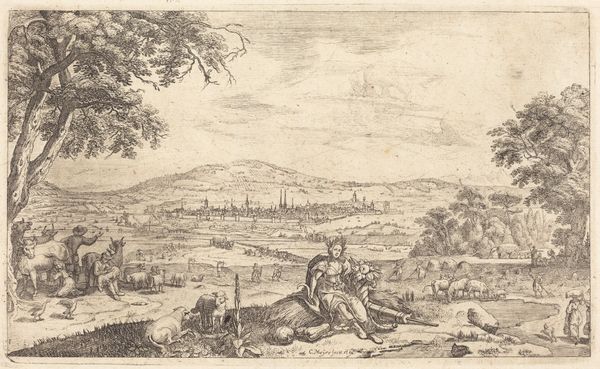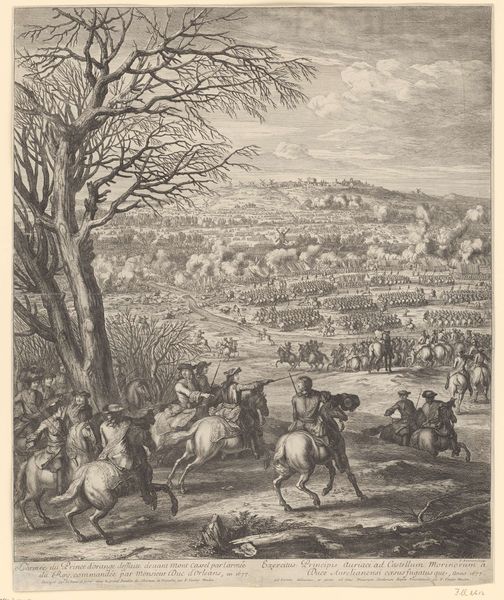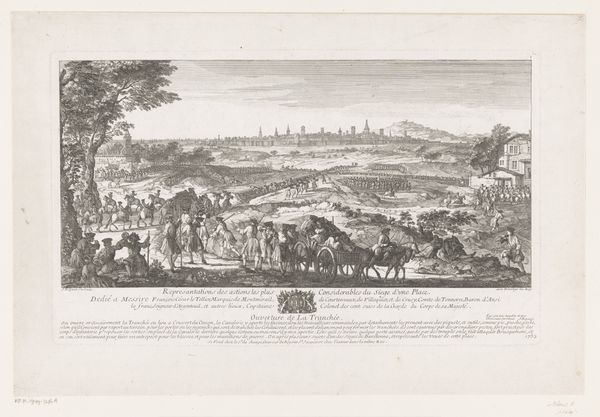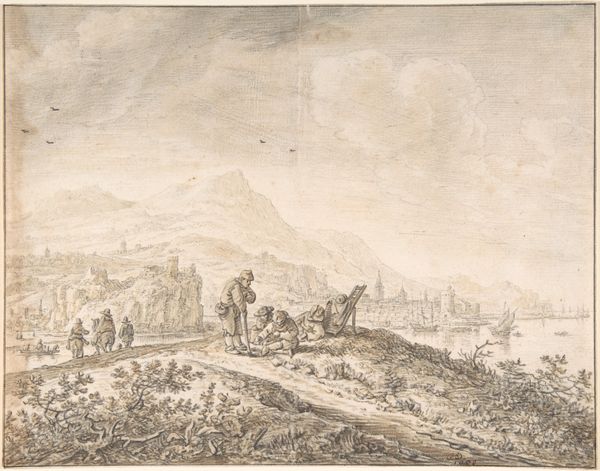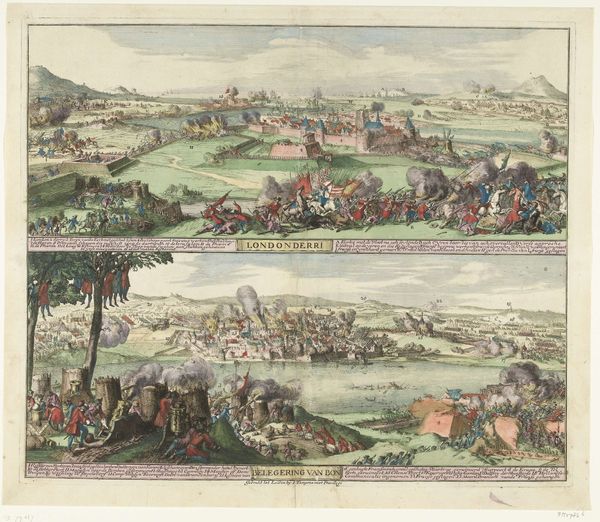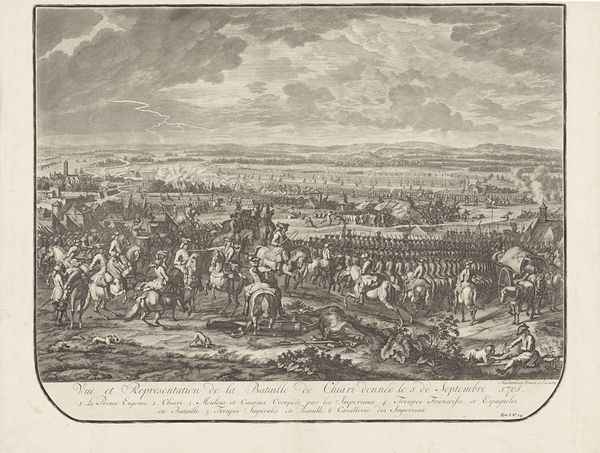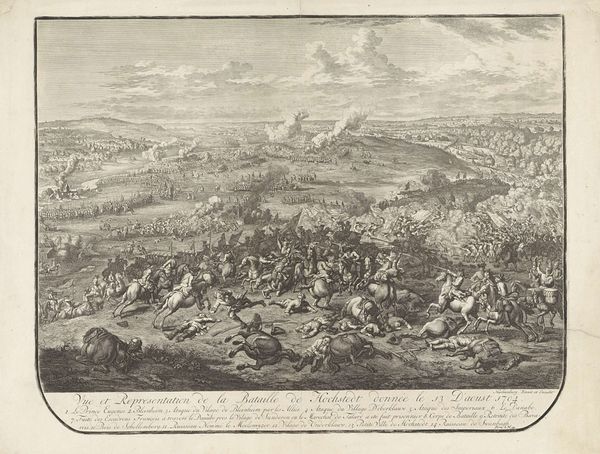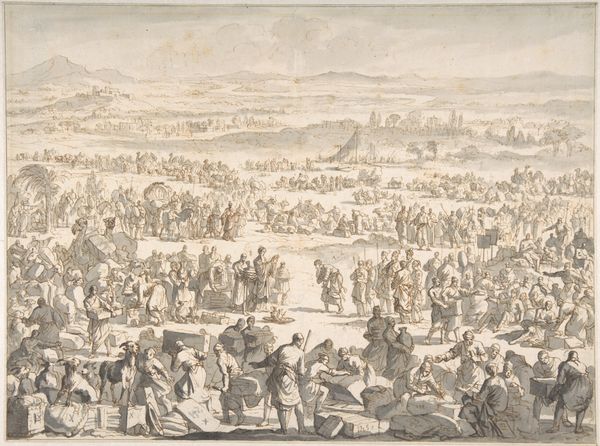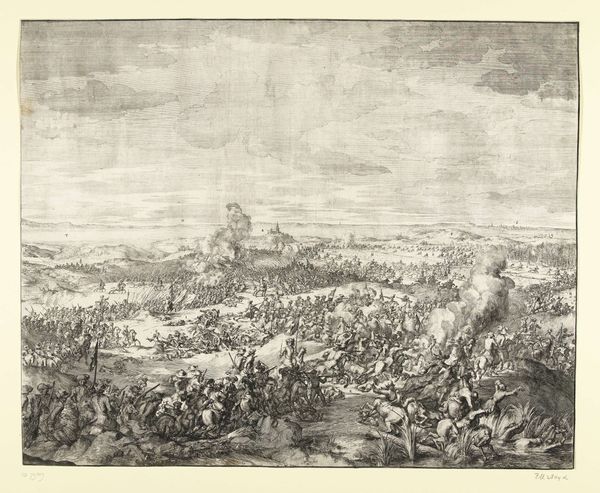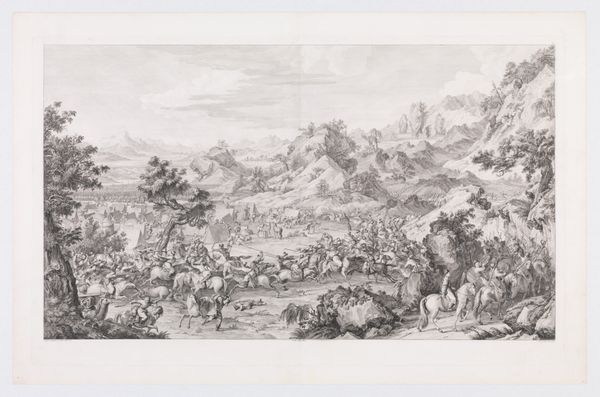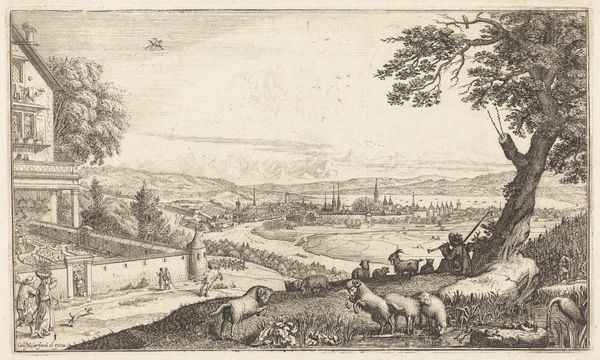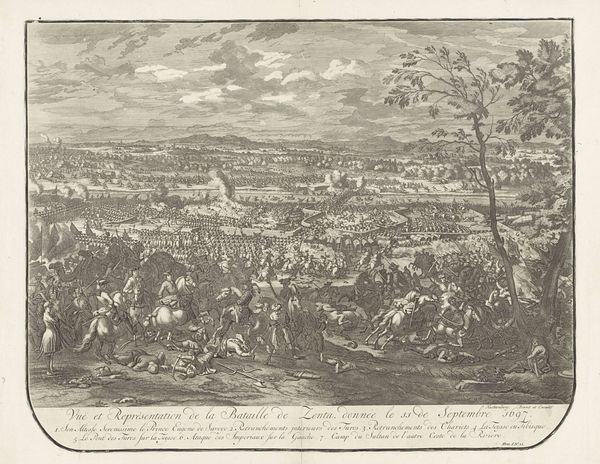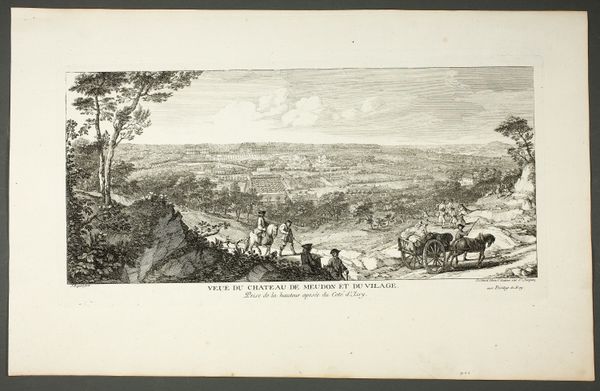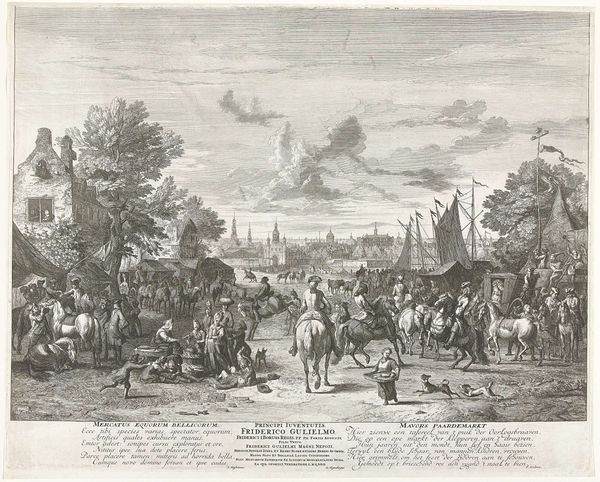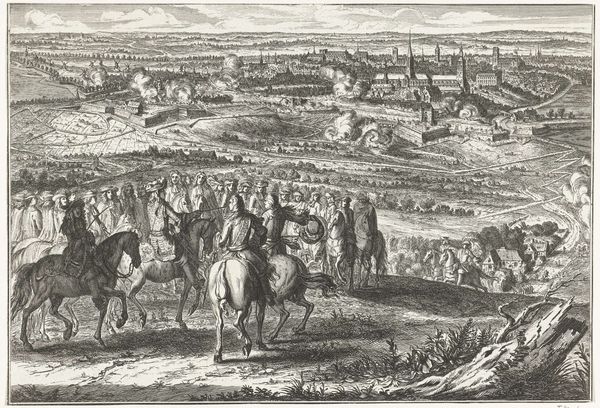
View of the City of Luxemburg from the baths of Mansfeld (taken on 3 June 1684) 1686
0:00
0:00
oil-paint
#
baroque
#
oil-paint
#
war
#
landscape
#
oil painting
#
cityscape
#
history-painting
#
watercolor
Dimensions: 221 x 400 cm
Copyright: Public domain
Curator: What strikes me first is how panoramic and vast this feels. There’s almost too much information to absorb in one go. Editor: Agreed. It's a wide vista indeed, showing "View of the City of Luxemburg from the baths of Mansfeld," captured in oil on canvas around 1686 by Adam van der Meulen. What reads to me most strongly are those distant plumes of smoke – a rather stark detail amidst the otherwise pastoral scene. Curator: Those smoke plumes definitely unsettle the peaceful veneer, hinting at the less visible struggles of siege and conflict. Luxemburg itself looms on the horizon like some fabled citadel, embodying both safety and potential destruction. What does it signify to us today, this fortress under pressure? Editor: It's not just a generalized symbol; van der Meulen documents, through paint, specific material realities and processes. The siege – led by Louis XIV himself, as historical records confirm – profoundly altered the city's infrastructure. I wonder, were the artist recording events directly or piecing them together from other sources? We know van der Meulen was an official court painter and often accompanied Louis XIV on his campaigns. The work becomes an early form of propaganda. Curator: So, visual strategies and material techniques collude. The distant Luxemburg then transforms to an emblem of not just survival, but resistance. Considering Louis XIV’s ambitions, the symbolic resonance is difficult to ignore; but still, beyond explicit messages and labor division, it invokes a dreamlike serenity. How did van der Meulen create such stillness and tranquility? Editor: Van der Meulen, though embedded within the Royal Court, had connections within artisan networks throughout France and the Netherlands, including makers of pigments. By all accounts, he sourced the finest materials for his workshop to convey minute atmospheric details—consider, too, the layers of semi-translucent glazing throughout to diffuse sunlight! That sense of depth results directly from manipulating material substances. Curator: Right. So it's about balancing symbolic and literal. I find myself lingering on the foreground figures; they seem almost oblivious to the city’s fate. It really suggests a detachment— a kind of aristocratic bubble—maybe mirroring the detachment and moral distance of those in command from those most impacted by war. Editor: Yes, and also pointing out the patron. These were men of leisure who have made all this carnage possible and wish to observe it, to possess this event through commissioning it, to consume its every detail as a demonstration of power and an ideological tool to justify their activities. Curator: It adds layers of uncomfortable truth to a pretty picture. The scene is visually arresting, but your highlighting of production brings an edge into the light that shifts everything, especially our sense of those gathering clouds of both war and illusion. Editor: I hope it enriches your appreciation for the image’s significance, and the complex processes required to construct such scenes both inside and outside the painting studio!
Comments
No comments
Be the first to comment and join the conversation on the ultimate creative platform.
